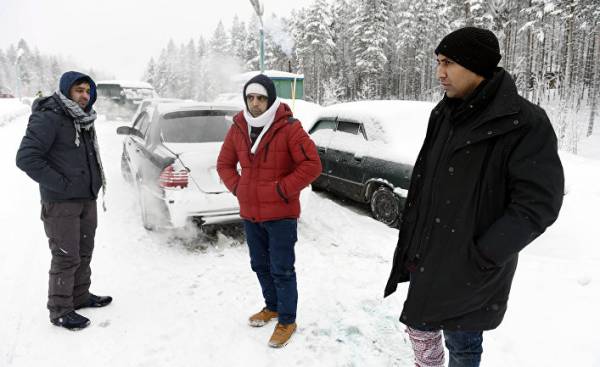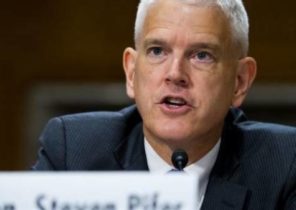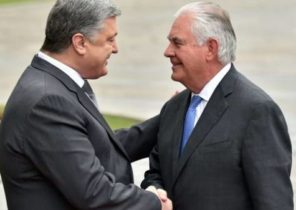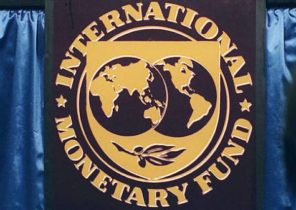
The immigration crisis, which began in 2015, greatly affected the policy of the European Union as a whole and on the situation in individual States. Effects of the crisis were felt in the bordering countries of the South-East of the EU, such as Hungary and Greece, and the countries of the Western European “core”.
In Eastern Europe, the crisis has less to do with the practical politics, but are important on a symbolic level. He gave right-wing populists a platform for protests against “parasites” and “failed policy of multiculturalism”. Throughout the EU, right-wing political movement has conquered new heights thanks to its xenophobic slogans — and if this xenophobia was mainly addressed in Europe settled migrant workers and their children, today they have become refugees from the Middle East. The result of pressure from the right led to a series of political decisions — from the partial closure until the election of nationalist governments and voting for withdrawal from the EU.
But what happens to the “far East” of Europe, in the countries of the former USSR? Despite the fact that the migration crisis did not affect these countries directly, it has had important, though indirect influence on local political processes. Its most visible consequence was the surge of “racism at a distance” in Ukraine and Russia. For various reasons people from various political camps United in protecting “Europe” from “outsiders.” Paradoxically, these people do not enroll in the latter category. On the contrary, such views insist on their right to speak on behalf of the political community to which they belong (ie, Europe, whose imaginary borders in the East coincide with the Eastern borders of the EU), urging him to be less hospitable in relation to outsiders.
On the other side of the curtain
Massive influx to Europe of the workforce from the Middle East, South and South-East Asia, Africa and the Caribbean was linked to the postwar economic boom. Being part of a global capitalist economy, this process proceeded in a certain historical period and in this period, Soviet citizens had very limited access to information about what actually happened in Western Europe.
The Soviet culture industry of the Brezhnev era produced and disseminated by several canonical images of “Europe” but most of them were fiction generated by the literature of the nineteenth century and borrowed from the books of Alexander Dumas, Jules Verne, Arthur Conan Doyle, Jerome K. Jerome, and the like “classic” authors. Ideas about higher social dynamics differed significantly from the real processes experienced by post-war European societies. One of these important processes is not seen by the Soviet people is literally changing the face of Western societies due to demographic changes, which have not been mentioned even in the official propaganda.
The very concept of mass labour immigration was foreign to the Soviet population, lived in conditions of closed borders and of a permanent labor shortage. The structural niche of low-wage immigrant workers here occupied by the immigrants from rural areas and from non-Slavic republics, who worked in the cities of more economically developed European part of the USSR. Around these internal migrants have created stereotypes (e.g. “limit”); they are often discriminated against — but the scale of these phenomena was still relatively modest because of the tight administrative restrictions to regulate the movement of people.
At the same time, the 1970s were a time of “right turn” in the Soviet intelligentsia. Frustrated by the lack of channels, and convert their cultural capital into material, most of the dissidents of the Brezhnev era was fascinated by the revival of national (Russian and “local”) culture, religion, ideas of a “meritocratic” social inequality and economic liberalism. Given the dominance of such views, it is not surprising that later, after discovering the ethnic diversity of the West, former Soviet citizens have eagerly embraced the conservative cliche about lazy foreigners, destructive harmonic, white and prosperous “Europe” that existed only in their imagination.
Ukraine: nationalist common sense
In post-Soviet Ukraine ethnic stereotypes were mostly directed against immigrants from the village speak Ukrainian, and arriving in the Russian-speaking city. In addition, Ukraine was and is the “traditional” discriminated minorities such as the Roma, but there was no immigration from abroad to any significant extent. The number of Roma in Ukraine is not even close to the levels seen in Hungary, Romania, Slovakia or the Czech Republic, so unlike the countries of the Danube basin, they did not become the home of the oppressed ethnic group. The influx of students from Asia and Africa after the collapse of the Soviet Union also greatly shoaled, though in General they still go to study in big cities of Ukraine. These students, as well as “traditional” non-white citizens of Ukraine — from Roma to Caucasians — became objects of persecution by the new xenophobic movements.
These movements tried to borrow political agenda from their European colleagues. Andriy Parubiy, current head of the Verkhovna Rada of Ukraine, previously an outstanding leader of the Social nationalist party of Ukraine (now “Liberty”), since 1998, maintained regular contacts with Jean-Marie Le pen, visiting him in France and organizing the visits of the activists of the French National Front in Ukraine. Two lessons that the French nationalists then taught his Ukrainian comrades, was the need to rest on socio-economic issues and have a zero-tolerance stance in relation to migration.
But in the Ukrainian reality, where the main migration was not, the ubiquitous graffiti “Freedom”, “Stop migration” most passers-by caused unless bewilderment. In other words, the Ukrainian nationalists were harder to hide your racism under the guise of “legitimate demands of the white working class”, as is done in Western Europe.
When in 2004 four of the Nazis staged the attack on the Kiev market “Troyeshchina”, from the explosions injured several citizens of Pakistan, Bangladesh and Vietnam, however, the only dead person was the cleaning lady is Ukrainian. That is, even in the most poorly paid jobs in the “migrant” areas of concentration the actual “workers” were insignificant. It is not surprising that the most successful neo-Nazi organization, the Social-nationalist Assembly (SNA), which became in 2014 the basis for the creation of the “Azov” is operated mainly in Kharkiv is the only Ukrainian city where the immigrant population is relatively large.
Characteristic is the close collaboration of the DREAM with the “Prosvita” organization harmless elderly intellectuals-patriots, mainly concerned with the revival of the Ukrainian language and folk customs. Ukrainian “national-Democrats” in the 1990s, has taken the humanitarian policy of the new state and custody of cultural production, do not have the political sensitivity that would have stopped them from being able to do and say things that are not acceptable in the post-war European liberal mainstream.
So, for two decades, the curriculum of Ukrainian schools distribute exclusive nativistic vision of history, literature and even geography. Opinion leaders and respected patriots in their rhetoric actively advocate for “saving the gene pool of the nation,” protect the interests of “indigenous population” and the rule of the “titular nation”, and even for the provision of ethnic Ukrainians sufficient “living space”. These people are hardly conscious Nazis, but I see nothing wrong with such terminology and ideas, normalizing them to the society.
Thanks to this “anti-imperialist” heritage real Nazis in Ukraine could act as a “just patriots who love their country”, and liberal opinion leaders have turned a blind eye to their xenophobic antics. A byproduct of this process was the cult of Stepan Bandera and nationalist organizations that operated during the Second world war — (banned in Russia as extremist organizations) of the UPA, OUN, and even the 14th voluntary division SS “Galichina”. Over the past decade red and black flag of the OUN and Bandera’s portrait of the attributes of a marginal political subculture became widespread symbols of innocent patriotism.
Thus, immigration crisis, Ukraine came up with a hegemonic political bloc between the liberals and the nationalists, a popular set of abstract nationalist beliefs as “common sense” and the modest number of actual migrants or minorities, which could serve as the objects of mass practical application of these beliefs.
Chasing the Ghost of Europe
At the end of November 2016 Deputy Minister of justice of Ukraine Sergey Petukhov published in the Facebook offer Ukraine to join the Dublin agreements, and voluntarily assume the quota for refugees. In his opinion, it would persuade the EU to introduce visa-free regime for Ukraine. This is not an isolated incident: earlier, a similar proposal was voiced by various leaders of public opinion, who claimed that accepting refugees, Ukraine will prove in practice its commitment to “European values”. Ten years ago, to voice that idea with influential public platform would have been unthinkable. In 2008 most “liberal” Ukrainian media criticized the government for signing the agreement with EU on readmission, lamenting the fate of Ukraine, which will be overrun by “criminals and carriers of exotic diseases.”
Of course, in 2016, without an outcry too, was not. Oleg Lyashko, leader of the populist Radical party, immediately denounced “our idiots” who want to help refugees “committed daily acts of terrorism and rape our women”. Naturally, such proposals to radicalize the “Pro-European” agenda of the government reinforce the position of national populist-eurosceptic like Lyashko, “Freedom”, the Right sector or “Azov” (the activities of these organizations as extremist and banned in Russia). The Ministry of justice of Ukraine has officially distanced itself from the private views of their representative, but that did not stop the “Freedom” to hold a picket near the building of the Ministry.
In addition to the nationalist forces, from which such a reaction was expected, fueling migrantophobia hysteria and joined the oligarch Vadim Rabinovich, head of the party “For life”. The “classical” Jewish name did not prevent Rabinovich to participate in the celebration of xenophobic populism: he registered a draft law prohibiting the Prime Minister the adoption of any migrants without the approval of the Parliament (initiative vividly calls to mind the recent referendum in Hungary).
While liberals appeal to “European” values of tolerance and equality, their opponents are constructing the image of white Christian Europe, exhausted from the barbarian hordes attacking from the outside, from the degenerates and traitors, undermining it from within. Common place in both narratives is the figure of Europe as a “big Other”: that Ukrainians need to join a liberal Europe, or to defend a conservative Europe, but in any case the main motive is to prove that we are genuine Europeans.
The dialectic of IDPs
The problem of refugees arriving in the EU, relatively far from the Ukrainian realities, but at the same time, the country is experiencing its own “immigration crisis”. The official number of internally displaced persons (IDPs) who fled from the war in the East, over 1.7 million people. this figure does not include those who went abroad (mostly to Russia); the total number likely exceeds the number of IDPs and refugees created by the war in Bosnia (2 million).
These figures should be viewed in an economic context (the strongest decline in living standards) and political: pre-Maidan status quo was based on the balancing of two competing national populisme, which provided “pluralism by default” — no political faction could gain enough weight to threaten the institutions of liberal democracy. Today this compromise is no stone left political victory of the Pro-Ukrainian nationalism against Russian-speaking. In practice, this means that people whose social situation is deteriorating rapidly, can finally lay the blame on the less privileged group, justifying their hostility with the dominant discourse.
To do collective scapegoat of Ukrainian IDPs, the easier it is that their “wine” more “obvious” than in the case of the Roma or Jews. Nationalist politicians and intellectuals regularly lay the blame for war on the people of Donbass, which “urged Putin.” Living under the presumption of guilt of each particular person is constantly forced to prove their political loyalty to Ukraine. Even demonstrate loyalty no guarantee against charges of cowardice: if the immigrant is male, he must join the army and fight for your home, and not hide behind the soldiers from other regions, which certainly is not to blame. It is difficult to say whether this argument is borrowed from the nationalists in the EU who speak the same about the Syrian refugees, or, perhaps, the Europeans learned it from the Ukrainians.
“They hate our country” is the ideological justification in this case is only crowned by the classic set of charges usually brought against discriminated minorities. According to polls conducted by the Kiev international Institute of sociology, immigrants consider to be particularly prone to crime (this statement became the keynote of lengthy newspaper articles Vadim Troyan, at that time head of the Ukrainian police); don’t trust them; they are rich and arrogant, inflated prices, and at the same time, they are so poor that they take jobs away, agreeing to lower wages; they receive unmerited social assistance from the state; they even speak differently! Immigrants from the Eastern regions the polls are written in the “Donetsk mafia”, imposing on them the burden of collective guilt for all her crimes, and at the same time despise them as uncouth representatives of the lower social strata.
These stereotypes are less prevalent in the regions adjacent to the war zone, but they are strongly rooted in Kiev and in Western regions. The recent protests of employees of the Burshtyn TPP in the West of Ukraine, owned by Rinat Akhmetov, was instrumentalized local right a public organization. She tried to refocus protest against the employees of Akhmeta enterprises in the East, which allegedly deliberately moved to Burshtyn, taking jobs from local residents.
At the same time internally displaced persons are portrayed as more deserving of compassion group in contrast to refugees from other countries — as it was in Yahotyn. “Our own people are in trouble” are a rhetorical response to calls for international solidarity, which, however, subsequently immediately forget. As in other similar cases (for example, the contradictory attitude of the Hungarian Transylvanian nationalists to “compatriots”), the Ukrainian IDPs are doomed to lead a double life: being an object of brotherly love when you need something to oppose the “Syrian terrorists”, and despised Cinderella in normal circumstances.
Russia: xenophobia applied
In post-Soviet Russia had a different position. On the one hand, historically, the Russian liberals have always stayed away from the nationalists. On the other hand, xenophobia in Russian society more rooted.
According to data compiled by the Congress of national communities of Ukraine, the victims of racist and xenophobic attacks in 2015 the territories controlled by the Ukrainian government, 19 people died. One of these 19 died. Meanwhile, in Russia, for the same time, according to the human rights center “Sova” at least 11 people were killed and 82 injured or beaten by racists and neo-Nazis. At the same time, the related “Owl” does not include the North Caucasus, the Crimea, and also the mass brawl.
The reason for such differences between Russia and Ukraine is a much larger concentration of labour migrants in the major cities of Russia. They mainly come from countries of Central Asia, but also South Caucasus, Ukraine, Moldova, and Vietnam. In addition to immigrants, there are numerous “non-Slavic” ethnic minorities, particularly from the North Caucasus. These Russian citizens are often perceived as foreigners, as it was during the ethnic pogrom in the Karelian Kondopoga in 2006. Two days after a domestic conflict between “local” and Chechens resulted in riots, to the place of events there arrived the management of the far-right Movement against illegal immigration, stating the agenda and demands against “immigrants”.
The level of “grassroots” of xenophobia in the last decade in Russia is consistently high. The potential of using these sentiments for political mobilization important and obvious to all political forces — Pro-government movements, radical nationalists and liberals.
Throughout the 2000s, xenophobia was the main resource of nationalist opposition in Russia. Her strategy was to support or directly organize a “people’s gatherings” and local riots wherever erupts ethnic conflict — from Kondopoga in 2006 to the Moscow district of Biryulyovo in 2013. In each of these situations, the nationalists presented themselves as the mouthpiece of the folk elements, reasonable voices of the majority, dissatisfied with the policy of the authorities and big business, attracting migrants in their own selfish interests. It is noteworthy that the Ukrainian far-right groups are now trying to apply this strategy, proven in Russia.
The Russian government, for its part, operates according to the classical algorithms of the Soviet bureaucracy. Any “destabilizing” incident like Biryuleva or Kondopoga officials as soon as possible try to extinguish, with one hand, resorting to repression against right-wing activists, on the other — “listening to indigenous populations”, resorting to spot deportations and xenophobic rhetoric.
In 2013, the theme of migration became a key on the eve of elections of the mayor of Moscow. Unique situation when all of the candidates and the representative of the government Sergey Sobyanin (acting mayor and eventually won), and supported by the liberal opposition Alexei Navalny, the candidate from the Communist party Ivan Melnikov actively resorted to anti-immigrant rhetoric. Most effective in this rhetorical contest was exactly Sobyanin, as he was the only one who could back up their words with deeds, on the eve of elections authorizing large-scale raids on illegal immigrants and built on the outskirts of Moscow, a concentration camp awaiting deportation for people.
Russian liberals, for the most part traditionally declaring cosmopolitan values, however, have long recognized the enormous political potential of migrantophobia. Part of the liberal camp (Navalny and his staff, the Democratic choice Vladimir Milov and others) are trying to tap this potential, giving xenophobia a more respectable appearance, “rationalizing” it. That is: we are not talking about the dark racial hatred of the unlike, but on the “real issues” of the cultural incompatibility of rising crime, the proliferation of cheap, unprotected labor. The most common recipe for such a rational xenophobia is the requirement of introducing a visa regime with the countries of Central Asia.
In General, xenophobia, maintaining positions in society, not out on the surface of policy without the necessary sanctions. These sentiments are manageable, and their relative UPS and downs are regulated media. In this sense, the European migration crisis has played into the hands of Kremlin (although, of course, this effect is not indicative of the innocence of conspiracy theories, according to which the crisis is part of Putin’s plan to destabilize Europe).
The unfolding crisis in Europe is helping the Kremlin media to stifle any discussion migrantophobia nature in the country, realizing spatial transfer. Pro-Kremlin media are filled with fantastic stories about the abuse of refugees against German women or capitulation to radical Islam “tolerastov” in France, while the topic of migration in Russia is almost completely dropped from the mainstream discussion of the last two years.
In Russia, xenophobia has become an effective instrument of manipulation of public opinion in the hands of the government.
The influx of refugees from Eastern Ukraine, which began in the summer of 2014, is an important example of how the Russian government effectively controls xenophobic sentiments. Despite the large number of people fleeing from the war in Russia (according to unofficial — more than a million people after the most intense clashes in 2014 and early 2015), refugee status could get very few. After the Minsk agreement in February 2015, the Russian authorities began to deny this status to the majority of Ukrainian citizens, referring to “normalization” of the situation in their hometowns. The very theme of Ukrainian refugees disappeared from the mainstream media so as not to incite conflicts at the local level began to emerge of friction between local and Ukrainian immigrants.
The migration crisis, the EU has indirectly affected Russia, and Ukraine. In Russia, xenophobia has become an effective instrument of manipulation of public opinion in the hands of the government. News from the EU has allowed the Kremlin to move the xenophobic prejudices of the Russians on European soil. This transfer on time muted public outbreak of xenophobia directed against the “local” minorities, and, of course, adopted the image of Russia as a bulwark of “order”. In the Ukraine crisis have deepened the schism between the still marginal Pro-European liberals (who publicly appeal to the European values of solidarity and empathy) and the populist nationalists gaining political points on the news about the “decline of Europe”.
The crisis in the EU takes place simultaneously with another — the military conflict in Ukraine, generating waves of IDPs and refugees from the Donbass. These people can occupy a structural niche discriminated minority in Ukraine, and also to join the ranks of existing oppressed groups in Russia. Ultimately, inciting hatred of the “Syrian terrorists” in distant Europe is preparing the ground for more tangible discrimination directed against neighbors and fellow citizens.
Today the preservation of the passive, apolitical society is for the government and more pressing need than situational benefits it could derive from the conflicts on the basis of domestic xenophobia. However, this situation could easily change when the Russian elite there is a serious need. Until then, the European migration crisis allows you to keep racial hatred at a low level.







